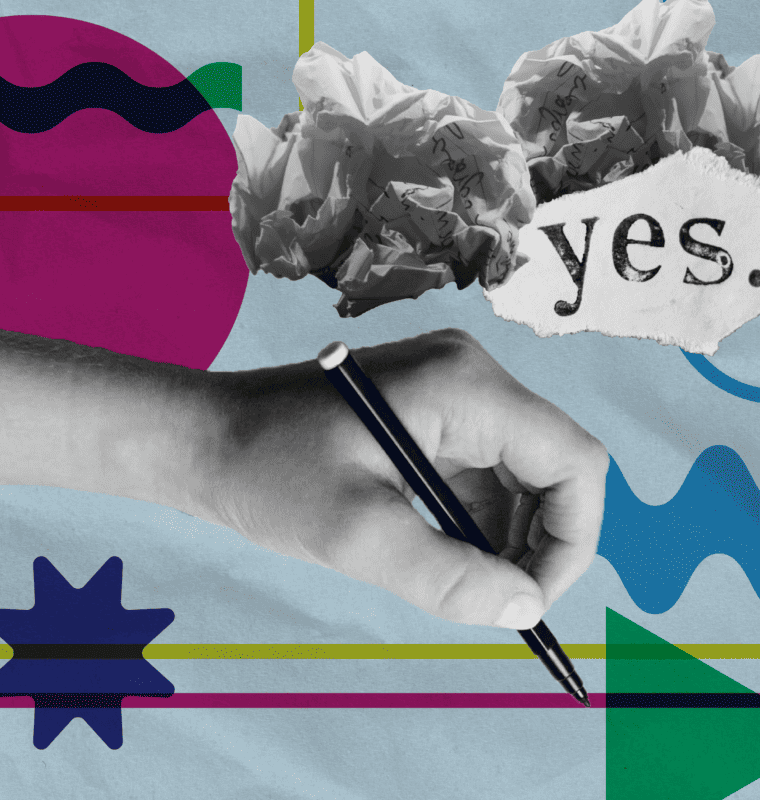
Image by Julianne Medenblik
Copyediting requires constant decision-making. To hyphenate or not to hyphenate? Comma, semi-colon, colon, en dash, em dash, or ellipsis? Sentence case or title case? The answer usually is: It depends.
Beyond syntax, semantics, and grammatical mechanics, there exists a more delicate space. Enter intersectionality, which can be quiet but is omnipresent. Copyediting is often the last hurdle before publishing or locking content, and conscientious copyediting means cultivating an awareness of reader multiplicity. It means constantly thinking, assessing, and reassessing. Recognizing and remembering that your intended audience contains multitudes unbeknownst to you, but ones you nonetheless must respect and address, overtly or covertly. Autopilot copyediting (as my mentor used to joke, “comma in, comma out?”) isn’t enough. Who is the intended audience, and am I revising to acknowledge their humanity? Am I editing out ableist, cisheteronormative, exploitative, and monocultural language? Because we are people, and people have several identities, evolving ideas and knowledge bases, and many, many opinions. People: We’re complicated.
Let’s pause and review a key term—intersectionality. While the concept has been important throughout time, one could argue that we owe the earliest credit to Sojourner Truth in 1851. Members of the Combahee River Collective (formed in 1974) continued Truth’s work, but civil rights activist and scholar Kimberlé Crenshaw is known for coining the term. I’m using Crenshaw’s 2020 TIME interview to define intersectionality.
“It’s basically a lens, a prism, for seeing the way in which various forms of inequality often operate together and exacerbate each other…. some people are subject to all of these, and the experience is not just the sum of its parts.”
These explanations and historical references provide necessary contexts. Because copyediting isn’t vacuum bound. Like linguistics, it evolves, hopefully in flow with ever-improving best practices.
In the time of activist-scholar Pauli Murray, we didn’t have expansive language for disabilities, trans people, gender-nonconforming people, or pronouns (let alone rolling pronouns or neopronouns). Now we do. We didn’t have publication-based standards for capitalizing Black, Latine or Latinx, and Indigenous. But now we do.
What’s my point? We as copyeditors need to edit with a learning-centered mindset, with the intersectional prism in mind, remembering that each edit can recognize or alienate a reader. Words matter because people and their experiences matter.
Our editorial choices have ripple effects across, within, and between (insert preposition I’m forgetting here) for accessibility, diversity, equity, inclusion, and belonging. This is what my pinned mental note reminds me each time I turn on track changes or use the comment function. Every inclusion and exclusion matters.
Happy intersectional editing, y’all.
Ren (they/them)
P.S.: If you’re more of a visual-audio learner, I recommend Crenshaw’s 2016 TED Talk, “The urgency of intersectionality.”

